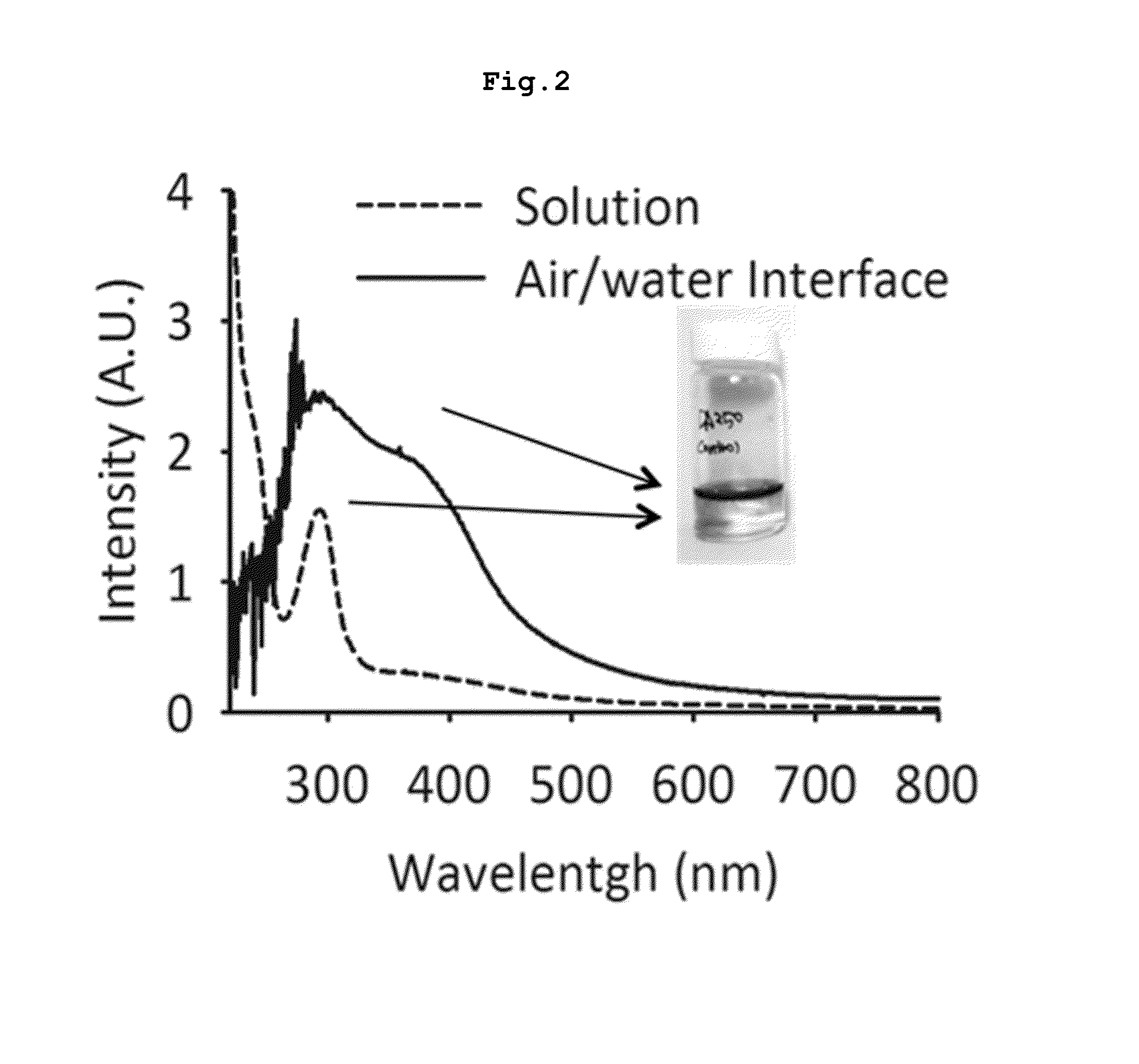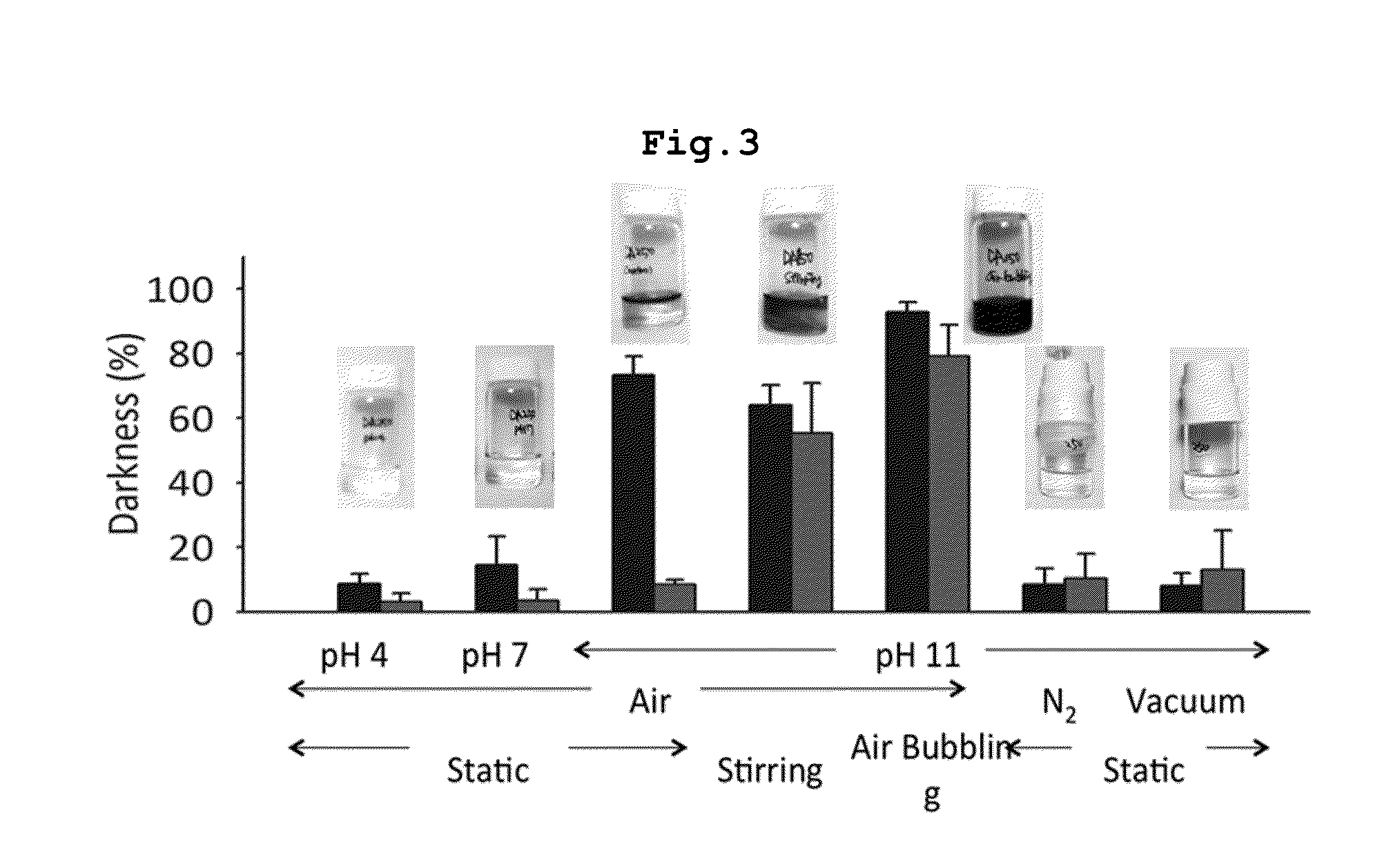Catecholamine-based versatility film and a preparation method thereof
- Summary
- Abstract
- Description
- Claims
- Application Information
AI Technical Summary
Benefits of technology
Problems solved by technology
Method used
Image
Examples
example 1
Film Preparation
[0080]The following experiment was performed to prepare the film of the present invention.
[0081]Particularly, polyethylenimine (PEI, MW: 750 kDa) 20 wt % solution was mixed with 2 wt % solution of either dopamine (DA), pyrogallol (PA), or pyrocatechol (PC) at the ratio of 1:1 (v / v). Each mixture was filled in a container, which stood on the flat board carefully not to be shaken.
[0082]As a result, as shown in FIG. 1, as time went by, the interface between air and the solution turned brown. When pyrogallol (PA) was mixed with PEI, the film was formed in the interface one minute later. When dopamine (DA) or pyrocatechol (PC) was mixed with PEI, the film was formed in the interface and thus the solution was not spilled out but arrested in between the film and the container when observed 30 minutes later (FIG. 1).
example 2
Investigation of catechol oxidation level of the Interface of the Film and the Inside of the Solution
[0083]To compare the catechol oxidation level that is a major mechanism for the film formation, the film prepared in Example 1 and the solution included in the film were observed by UV-Vis.
[0084]As a result, as shown in FIG. 2, equal peaks were observed at 280 nm (absorbance of the catechol not-oxidized but remained in the solution), and 350˜400 nm (absorbance of the oxidized catechol). It was peculiar that absorbance of the catechol itself and absorbance of the oxidized catechol were both very high in the film that had been formed on the interface. When the absorbances were compared, it was confirmed that a lot more catechols were oxidized in the interface than in the solution. The difference in absorbance was also confirmed by the naked eye by observing light yellow solution and dark brown film. The brightness or darkness of color suggested the level of catechol oxidation. So, it c...
example 3
Conditions for Film Formation
[0085]The following experiment was performed with regulating various conditions that were believed to be involved in the film formation in order to determine the conditions for the film formation.
[0086]Particularly, dopamine (DA) of Example 1 was first used. The solution was contacted with air without being shaken and pH of the solution was regulated differently such as pH 4, pH 7, and pH 11. The interface between water and air was presented as black bar. The red bar indicated the inside of the solution. The film was only formed at pH 11. Under the same pH condition, that was pH 11, other conditions were regulated including stirring, air bubble injection, nitrogen injection, or vacuum condition, etc. Under each condition, the film formation was observed.
[0087]As a result, as shown in FIG. 3, only when the film was formed, the brightness presenting the catechol oxidation level was dark in the interface between water and air, which was consistent with the...
PUM
| Property | Measurement | Unit |
|---|---|---|
| Dimensionless property | aaaaa | aaaaa |
| Strength | aaaaa | aaaaa |
Abstract
Description
Claims
Application Information
 Login to View More
Login to View More - R&D
- Intellectual Property
- Life Sciences
- Materials
- Tech Scout
- Unparalleled Data Quality
- Higher Quality Content
- 60% Fewer Hallucinations
Browse by: Latest US Patents, China's latest patents, Technical Efficacy Thesaurus, Application Domain, Technology Topic, Popular Technical Reports.
© 2025 PatSnap. All rights reserved.Legal|Privacy policy|Modern Slavery Act Transparency Statement|Sitemap|About US| Contact US: help@patsnap.com



